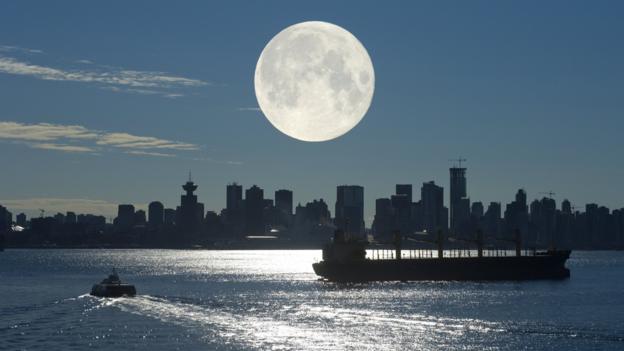
Want to go to Mars? Dutch organisation Mars One says it will open applications imminently. It would be a one-way trip, and the company hopes to build a community of settlers on the planet.
Uncharted waters, mountains or far away lands have always drawn explorers. History books show that desire for adventure, even in the face of extreme danger, did not deter the likes of Columbus or Magellan.
So it is perhaps not surprising that Mars One has already received thousands of prospective applicants. But there is no return - unlike the mission which hopes to fly to Mars and back in 2018.
A hostile planet

Scientists believe that Earth and Mars once had similar atmospheres, but they developed very differently
Mars' atmosphere is very thin, extremely cold and what water remains is frozen or hidden underground
There's evidence that Mars was once covered in oceans of water at a time when it had an abundant atmosphere
This very thin atmosphere can't stop heat from the Sun escaping into space
Future explorers take note. Applicants must be resilient, adaptable, resourceful and must work well within a team. The whole project will be televised, from the reality TV style selection process, to landing and beyond.
On a visit to the BBC's London office, Mars One's co-founder Bas Lansdorp explains why this would be a one-way flight.
During the seven-to-eight month journey, astronauts will lose bone and muscle mass. After spending time on Mars' much weaker gravitational field, it would be almost impossible to readjust back to Earth's much stronger gravity, says Landsorp.
Successful applicants will be trained physically and psychologically. The team will use existing technology for all aspects of the project. Energy will be generated from solar panels, water will be recycled and extracted from soil and the astronauts will grow their own food - they will also have an emergency ration and regular top-ups as new explorers join every two years.
But is it realistic to believe that individuals could live and prosper on the Red Planet?
Exploring our world, and now beyond is what humans do, it's in our genome”Bas LansdorpCo-Founder, Mars One
On Earth, we are protected from the solar wind by a strong magnetic field. Without this, it would be much more difficult to survive. Although Mars once had similar protection about four billion years ago, today there is no such shield protecting it.
The Martian surface is therefore extremely hostile to life, says Dr Veronica Bray, from the University of Arizona's Lunar and Planetary Laboratory, who is sceptical about the project.
There's no liquid water, the atmospheric pressure is "practically a vacuum", radiation levels are higher and temperatures vary wildly, she says.
"Radiation exposure is a concern, especially during the trip. This can lead to increased cancer risk, a lowered immune system and possibly infertility."

The settlers will live in two units and additional domes will house food and other emergency supplies
"I have no doubt that we could physically place a human being on Mars. Whether they'd be able to survive for an extended period of time is much more doubtful," adds Dr Bray.
Ambassador for the project, Professor Gerard 't Hooft, a recipient of the Nobel Prize for theoretical physics in 1999, admits there are unknown health risks. He says the radiation is "of quite a different nature" than anything which has been tested on Earth.Technical challenge
'The single greatest achievement'
"They [the applicants] will be told that there are risks, but it will be our responsibility to keep the risks within acceptable odds."
Nasa astronaut Stan Love knows first-hand the difficulties with technology that his colleagues have experienced on the International Space Station in low-Earth orbit.
The apparatus which recycles human waste and turns "yesterday's coffee into into tomorrow's coffee needs frequent maintenance and would likely not survive years of continuous duty on Mars", he says.
Love has recently returned from Antarctica which he says is a "picnic compared to Mars".
"It's full of water, you can go outside and breathe the air. It's paradise compared to Mars and yet nobody has moved there permanently."
Although dubious about the funding, the technology and the impact of radiation, Love applauds small enterprises like Mars One.
He strongly believes private organisations will help raise awareness and hopefully discover or design some technology which will help future teams reach their goal of landing on Mars.
"We've been dreaming about this for 50 years. The Moon was just supposed to be a stepping stone to Mars. But when you study the problem, you realise it's immensely hard to do this."
Many critics have focused on funding, and whether the project would hold the public's attention for many years. It will cost an estimated £3.8bn ($6bn) to send the first group.
Dr Chris Lintott from Oxford University says that while the project is technologically plausible, he does not think they will find the funding.
"It's about having the political will and the financial muscle to make this happen. That's what nobody has been able to solve so far," he explains.
A rover will land first to scout the best area
But Lansdorp sees no issue with funding. He uses the revenue from the worldwide broadcasting rights of the Olympics as a comparison.
"This will be the biggest thing that humanity has ever done. In 15 years people will still be watching.
"Exploring our world, and now beyond is what humans do, it's in our genome. The settlers' dream of going to Mars will come true."
Whether or not the mission will achieve its goal, the publicity generated from the "big-brother" style televised application process means the world will surely be watching.
in BBC News





















